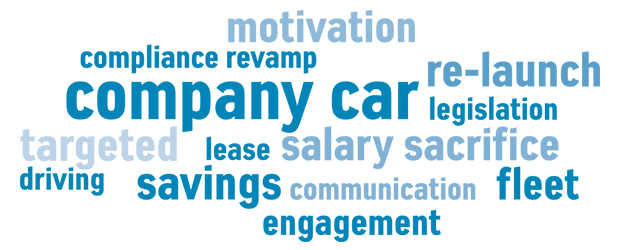Car salary sacrifice schemes can be an attractive benefit for both staff and employers, but, at times, the complexities involved may affect take-up. And once a scheme has been in place for some time, what can employers do to maintain its attraction and breathe new life into their scheme?

If you read nothing else, read this…
- Refreshing a scheme will first require reassessing the initial principles for offering it.
- Car salary sacrifice schemes offer staff an all-inclusive package with a brand-new car, servicing and maintenance, road tax and insurance.
- Advantages, such as the ability to reduce their carbon footprint, need to be emphasised to employees.
- Employers must also highlight the risks of schemes to staff.
Matt Walters, head of consultancy services at Leaseplan, says: “Revamping a scheme is about reassessing, going back and exploring the initial principles of a scheme and tweaking them accordingly. Employers must make sure they still meet the business’s and employees’ needs.”
Highlight the benefits
Schemes offer staff an inclusive package of a car, maintenance, road tax and fully comprehensive insurance, in return for employees forgoing a portion of their gross pay. Therefore, the money staff can save from participating in a scheme needs to be highlighted to them.
Sarah Hodgkin, salary sacrifice development manager at Hitachi Capital Vehicle Solutions, says: “Emphasising the advantages of taking a car through salary sacrifice is vital. In terms of cost, peace of mind and convenience, the schemes are ideal because they are usually provided on an all-inclusive basis.”
Andrew Kirby, commercial director, employee benefits at Zenith, adds: “Staff need to be well aware of the fact that car salary sacrifice plans include everything apart from fuel. They need to be encouraged to consider the other costs of running a car and therefore understand the value of a scheme.”
According to the Employee Benefits/Towers Watson Flexible benefits research 2014, published in April 2014, 22% of respondents were planning to add car salary sacrifice to their flexible benefits plans. Almost one-fifth (18%) of employers already offered salary sacrifice cars through their flex plan.
The positive aspects of taking part in a scheme for employees, such as the ability to reduce their carbon footprint by taking a low-carbon-dioxide (CO2 ) car, and the savings that are available, should be emphasised to staff both when a scheme is implemented and beyond.
For example, according to research by Fleet Evolution in February 2014, employees who drive cars provided through a salary sacrifice arrangement can reduce their motoring carbon footprint by up to 42%.
Low-emission car choice
Meanwhile, according to the Company car trends survey by GE Capital, published in August 2014, 22% of employers said a CO2 emissions limit was the top criteria for employee car choice.
Adam Leech, managing director of Fleet Evolution, says: “There are so many options in the market for staff to choose from, such as plug-in hybrid, four-by-fours or cars with low CO2 emissions.”
Reminding staff of the potential savings available can also help to revive a scheme and reinvigorate employee interest.
Michelle Howles, marketing director at Affinity Leasing, believes that such reminders are key to boosting and maintaining employee enggaement with a scheme. “Staff can easily forget about what benefits are on offer to them if they are not at the forefront of their mind,” she says. ”Staff simply need to be reminded that the scheme is there when they need it.”
Targeted communication
Employers should also consider the communication methods used to reinvigorate a car salary sacrifice scheme. Guy Roberts, director of Novalease, says: “Different people like different things so a range of communication through emails, online portals, videos and personalised communication of any kind works best,” he says.
In some cases, employers will need to increase the amount of communication around their scheme. According to research by Zenith in July 2014, 85% of 327 employees surveyed would be open to further communications about their employer’s car salary sacrifice scheme.
Leaseplan’s Walters says: “The biggest issue we find is schemes that are not marketed well. A car salary sacrifice scheme will fall over and die if so. HR, IT and marketing departments all need to be on board to keep it vibrant and relevant.”
Roberts also believes that employers should research their workforces to better understand what they want from a scheme. “Research conducted across the workforce can better engage those interested in a scheme,” he says. ”Surveys conducted online through short, simple text tend to be the most effective.”
Knowing a workforce well enough to know what it requires from its benefits package can also enliven a car salary sacrifice scheme. Kirby comments: “Employers could run car salary sacrifice surgeries for staff, as they are a really effective way to get individual questions answered through a web chat.
“It is always useful for employers to do upfront research to test demand, and make sure the scheme is launched accordingly.”
Sharon Richardson, commercial projects implementation manager at Leaseplan, adds: “We give employees one-on-one meetings with us to discuss their specific requirements. This kind of tailored communication can be really effective, as general communication can put a lot of staff off.
“Employers need only share what is necessary with employees, because it is easy to over-burden them with information and updates; keep it simple and concise.”
Planned campaigns, therefore, can be particularly effective. These could include email marketing, pop-up shops, e-shots highlighting special offers and open forums between management and employees, says Hodgkin.
“Staff should also be kept updated on new model availability,” she says. ”Highly anticipated models and those that are increasingly economical and environmentally friendly can encourage fresh take-up and keep current users engaged.”
Keep staff informed
Employers should also keep staff informed of any tax or legislation updates that impact the scheme. “It is really important to keep an eye on legislation updates associated with a scheme,” says Walters. ”For instance, the consumer rights bill coming into effect later this year [on 1 October 2015] will affect what employees need to know about car salary sacrifice.”
Furthermore, employers can benefit from the national insurance (NI) savings made, and many opt to reinvest these savings back into their car scheme in order to make the benefit even more attractive to employees. With regards to staff, the schemes are incredibly cost effective, as they can reduce the level of tax they pay through low CO2 emission models. This is because company car tax is based on a car’s CO2 emissions.
Refreshing schemes
Employers should ensure that they keep a car salary sacrifice scheme, and communications around it, fresh and updated to ensure staff are aware of what is available to them when they need it. Employees will not necessarily join a scheme when it is launched, but rather when they need a new car.
Zenith’s Kirby says: “Organisations tend to bombard their workforce with information, when the most effective strategy tends to be planned in advance, in a creative and fresh manner with a good mixture of communication.”
However, Leech believes that providers are better equipped to inform employees about the schemes, including the benefits and risks. He says: “Suppliers know what employees want from a company car , and can do ongoing promotion to keep employees interested.
“Highlighting the risks of a scheme is vital, because staff need to be educated correctly, and they need to be extremely careful when it comes to knowing how a scheme will affect their salary.”
Howles adds: “Fact sheets outlining the risks are very effective, as is providing employees with a phone number to get questions answered.”
Another way to give a scheme a new lease of life is to physically show staff the cars on offer. Leech says: “Nothing speaks louder than showing employees the products to touch and get excited about.”
In order to give car salary sacrifice schemes a new lease of life, employers need to consider how, when and why they are communicating the schemes to their workforce, keep them up to date with any changes or legislation updates associated with a company car and constantly highlight the advantages of taking part in a scheme.
Case study: The University of Birmingham revamps car scheme to engage staff

Ever since the University of Birmingham launched its car salary sacrifice car scheme for all 6,500 members of staff in October 2014, it has constantly reviewed and revamped its offering to help increase take-up.
Through the scheme, which is provided by SGFleet, staff can take up a fully maintained and insured car, and make savings through tax and national insurance (NI) efficiencies.
The scheme enables the university to compare CO2 emissions of employees’ new cars to the cars they are replacing. CO2 emissions for cars available through the scheme have been capped at 120g/km as part of the university’s carbon reduction strategy, Sustainable travel steering group.
Monica Guise, post, portering, transport and interim sustainable travel manager at the University of Birmingham, says: “We’re really pleased with how it has gone. About 37% of employees drive to work and it’s been fantastic to see how great this scheme is for them.
“We compiled an action plan including workshops, case studies, posters, e-banners and emails, because the success of a scheme is reliant on a strong marketing campaign. We have also committed to revisit this throughout the year.”
The university has also communicated the scheme to staff using email, posters and TV displays around campus and on the university’s intranet, as well as a series of presentations. It will also be holding a number of roadshows over the coming months at its various colleges and around campus in the next few months.
Guise adds: “The scheme will enhance the university’s environmental ethos and provide an attractive financial benefit offer for all employees either working for the university currently or those considering working for the university.
“However, looking at other universities that have implemented a car salary sacrifice scheme, initial take up has been slow but promising. We therefore desired to put in place a compelling offer for staff that will potentially attract high engagement.”
Reviving car salary sacrifice

Word cloud created by Employee Benefits